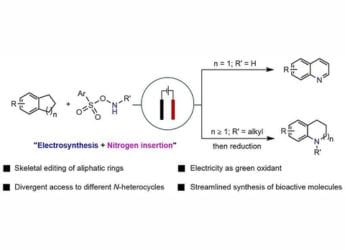- Home
- Science
- Science News
- Siberian Crater’s Mysterious Growth Could Be Due to Methane Gas, Scientists Find
Siberian Crater’s Mysterious Growth Could Be Due to Methane Gas, Scientists Find
Scientists reveal how Siberian craters form from methane gas explosions, linked to climate change impacts.

Photo Credit: Unsplash/ Anton Repponen
The craters are believed to be linked to climate change
In Siberia, a massive crater emerged explosively in the tundra, sending ice and rock hundreds of feet away and creating a large circular scar. This event marked the 17th crater discovered in the Yamal and Gyda peninsulas since 2013, attracting significant scientific interest. The craters are believed to be linked to climate change, with modern tools like drone photography, 3D modelling, and artificial intelligence (AI) aiding in their analysis.
Scientific Exploration
Dr Evgeny Chuvilin, lead research scientist at the Skolkovo Institute of Science and Technology's Centre for Hydrocarbon Recovery in Moscow, highlighted that the new crater was exceptionally well-preserved, providing a rare opportunity to study a "fresh" crater, as per a CNN report. For the first time, researchers used a drone to explore the crater's depths, reaching 10 to 15 metres below the surface. This allowed them to create a detailed 3D model of the crater, which is 30 metres deep.
Findings and Hypotheses
Igor Bogoyavlensky from the Oil and Gas Research Institute of the Russian Academy of Sciences, who operated the drone, described the difficulty of controlling it from the edge of the deep crater. The 3D model revealed unusual grottoes in the crater's lower section, confirming the theory that methane gas builds up in an underground cavity, causing an explosive blowout and forming the crater.
Methane Sources and Climate Impact
The source of the methane remains uncertain; it may come from deep within the Earth or closer to the surface, or both. Permafrost, which stores large amounts of methane, is weakening due to rising Arctic temperatures, facilitating gas escape. Satellite imagery estimated the crater's formation occurred between May 15 and June 9, 2020, with the crater first identified on July 16, 2020.
Future Research and Monitoring
Predicting these blowouts remains challenging, but scientists at the Woodwell Climate Research Center in Massachusetts are developing algorithms to track landscape changes and forecast potential crater formations. Their model has successfully predicted new craters and underscores the dramatic changes in the Arctic region.
Get your daily dose of tech news, reviews, and insights, in under 80 characters on Gadgets 360 Turbo. Connect with fellow tech lovers on our Forum. Follow us on X, Facebook, WhatsApp, Threads and Google News for instant updates. Catch all the action on our YouTube channel.
Related Stories
- Samsung Galaxy Unpacked 2025
- ChatGPT
- Redmi Note 14 Pro+
- iPhone 16
- Apple Vision Pro
- Oneplus 12
- OnePlus Nord CE 3 Lite 5G
- iPhone 13
- Xiaomi 14 Pro
- Oppo Find N3
- Tecno Spark Go (2023)
- Realme V30
- Best Phones Under 25000
- Samsung Galaxy S24 Series
- Cryptocurrency
- iQoo 12
- Samsung Galaxy S24 Ultra
- Giottus
- Samsung Galaxy Z Flip 5
- Apple 'Scary Fast'
- Housefull 5
- GoPro Hero 12 Black Review
- Invincible Season 2
- JioGlass
- HD Ready TV
- Laptop Under 50000
- Smartwatch Under 10000
- Latest Mobile Phones
- Compare Phones
- OnePlus 15R
- Realme Narzo 90x 5G
- Realme Narzo 90 5G
- Vivo S50 Pro Mini
- Vivo S50
- OPPO Reno 15c
- Redmi Note 15 5G
- Redmi Note 15 Pro 5G
- Asus ProArt P16
- MacBook Pro 14-inch (M5, 2025)
- Infinix Xpad Edge
- OnePlus Pad Go 2
- OnePlus Watch Lite
- Just Corseca Skywatch Pro
- Acerpure Nitro Z Series 100-inch QLED TV
- Samsung 43 Inch LED Ultra HD (4K) Smart TV (UA43UE81AFULXL)
- Asus ROG Ally
- Nintendo Switch Lite
- Haier 1.6 Ton 5 Star Inverter Split AC (HSU19G-MZAID5BN-INV)
- Haier 1.6 Ton 5 Star Inverter Split AC (HSU19G-MZAIM5BN-INV)

















